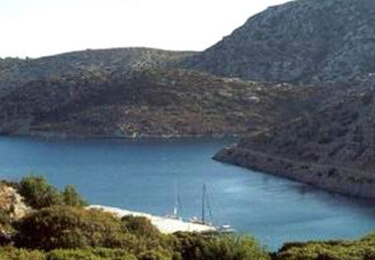 This is a small island 36 n. m. east of Patmos. This islet with its wonderful beaches is an ideal spot for anyone wishing to escape the pressures of everyday life for a while. In older times it was called Netousa or Tragea. Here the visitor's glance cannot stay cool; one experiences a never-ending wandering adventure.
This is a small island 36 n. m. east of Patmos. This islet with its wonderful beaches is an ideal spot for anyone wishing to escape the pressures of everyday life for a while. In older times it was called Netousa or Tragea. Here the visitor's glance cannot stay cool; one experiences a never-ending wandering adventure.
Greece
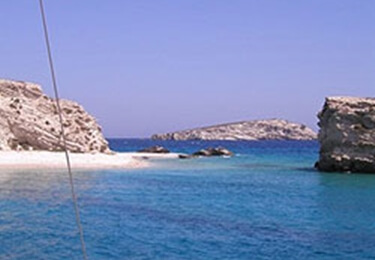 Arki, is the biggest of a group of islands to the north of Leipsi. The islanders live from fishing. You have the feeling that Arki has been forgotten. Away from tourism, the island seems mystical in its peace and stillness. There is only a little unique village, with drystone built houses. Opposite Arki is the small islet of Marathi, with a fine sandy beach.
Arki, is the biggest of a group of islands to the north of Leipsi. The islanders live from fishing. You have the feeling that Arki has been forgotten. Away from tourism, the island seems mystical in its peace and stillness. There is only a little unique village, with drystone built houses. Opposite Arki is the small islet of Marathi, with a fine sandy beach.
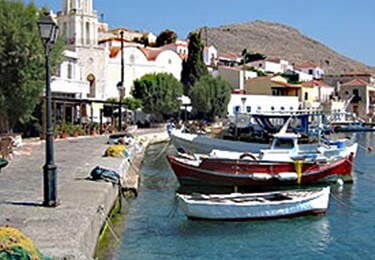 It is one of the smallest islands in the Dodekanese. Its inhabitants all live in its single, attractive village, which is also the port. Chalki is a rugged, mountainous island, which has been gradually abandoned by its inhabitants. It has fine beaches with clear water. It has escaped the tourist development of its large neighbour Rhodes, and the people coming here want a holiday on an untouristy island. The island is an international centre for meetings of young people.
It is one of the smallest islands in the Dodekanese. Its inhabitants all live in its single, attractive village, which is also the port. Chalki is a rugged, mountainous island, which has been gradually abandoned by its inhabitants. It has fine beaches with clear water. It has escaped the tourist development of its large neighbour Rhodes, and the people coming here want a holiday on an untouristy island. The island is an international centre for meetings of young people.
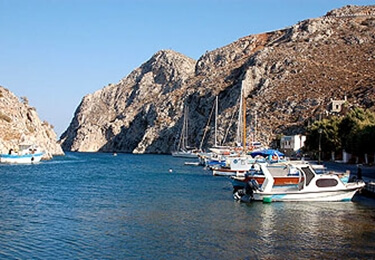 The terrain of the fourth largest island of the Dodecanese is mountainous, except for two fertile valleys, but it boasts of many natural attractions - caves, lovely beaches, unspoilt scenery - that make it a mini earthly paradise.
The terrain of the fourth largest island of the Dodecanese is mountainous, except for two fertile valleys, but it boasts of many natural attractions - caves, lovely beaches, unspoilt scenery - that make it a mini earthly paradise.
Kalymnos is widely known as the spongefishers' island, since such a large portion of the population is engaged in this ancient occupation.
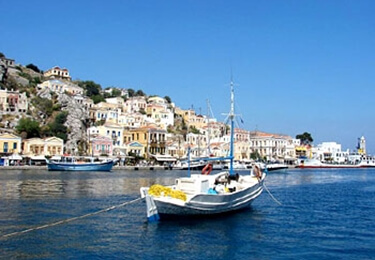 Kos is the island that gave the world Hippocrates, the father of medicine. The third largest of the Dodecanese, it is long and narrow in shape, mostly flat with two low mountains, Dikaio (875 m.) and Simpatro, that run along its southern coast. It is well watered, thus very fertile, and it's also very touristically developed.
Kos is the island that gave the world Hippocrates, the father of medicine. The third largest of the Dodecanese, it is long and narrow in shape, mostly flat with two low mountains, Dikaio (875 m.) and Simpatro, that run along its southern coast. It is well watered, thus very fertile, and it's also very touristically developed.
The island was first inhabited in the Neolithic era. In the 4th century B.C., its Asklepieion became famous as the leading "hospital" of antiquity.
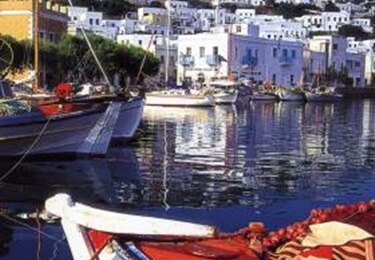 The sea sculped the coastline of Leros with lavish artistry giving it lacy shores, sandy beaches, protected harboursand amultitude of little islands allaround it. Nature there has been endowed with lush vegetation and landscape of pleasant alterations. History has played an important role on the island since ancient times. The people who have lived there have shown it respect and built monasteries, churches and mansions in a unique architectural style. Today Leros gives the impression of being one of the last little paradises.
The sea sculped the coastline of Leros with lavish artistry giving it lacy shores, sandy beaches, protected harboursand amultitude of little islands allaround it. Nature there has been endowed with lush vegetation and landscape of pleasant alterations. History has played an important role on the island since ancient times. The people who have lived there have shown it respect and built monasteries, churches and mansions in a unique architectural style. Today Leros gives the impression of being one of the last little paradises.
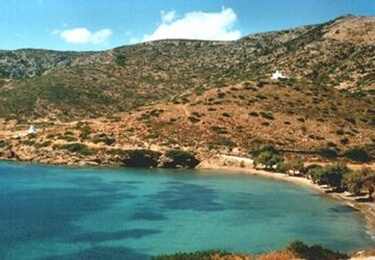 Not far from Patmos is a group of tiny islands, known collectively as Lipsi. They cluster round the largest, the only one which is inhabited, Lipso or Lipsi. It is an idyllic little island, off the tourist track, and you will find the inhabitants very helpful and cheerful. Here you will find beautiful sandy beaches and translucent waters. The island is so small that you can go everywhere you want to on foot. The hamlet on the protected natural harbour (the only settlement on the island), is composed of spotless whitewashed houses, while round its mini-piazza you can find tavernas, ouzeri, cafes and other eateries.
Not far from Patmos is a group of tiny islands, known collectively as Lipsi. They cluster round the largest, the only one which is inhabited, Lipso or Lipsi. It is an idyllic little island, off the tourist track, and you will find the inhabitants very helpful and cheerful. Here you will find beautiful sandy beaches and translucent waters. The island is so small that you can go everywhere you want to on foot. The hamlet on the protected natural harbour (the only settlement on the island), is composed of spotless whitewashed houses, while round its mini-piazza you can find tavernas, ouzeri, cafes and other eateries.
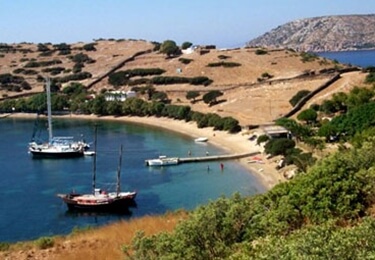 Theres something about Marathi which seems to emanate total tranquility--a feeling which is absorbed almost through the skin, like the vitamin D of the Greek sunshine. We often seem to have trouble dragging people away from this little isolated paradise island. It truly is tiny: one curved, sheltered bay where we tuck the boats in snugly, and lots of little coves you can hike to, over the other side.
Theres something about Marathi which seems to emanate total tranquility--a feeling which is absorbed almost through the skin, like the vitamin D of the Greek sunshine. We often seem to have trouble dragging people away from this little isolated paradise island. It truly is tiny: one curved, sheltered bay where we tuck the boats in snugly, and lots of little coves you can hike to, over the other side.

